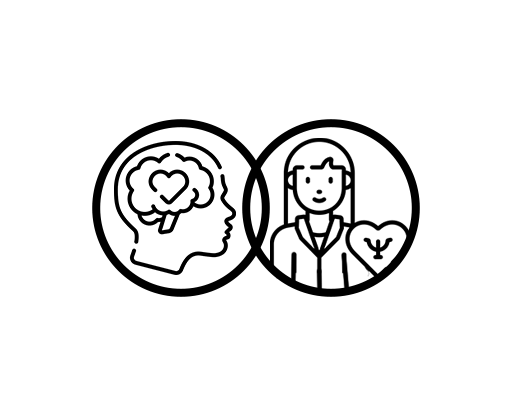Release Your Emotions Through Motion
- Mood management
- Physical and mental strengthening
- Creative method of expression

Solution Focused Brief Therapy is characterised as:
01
Tension
Release the muscular tension built due to stress, anxiety, fear, anger, panic and other emotional states
02
Connection
Use the connection of physical movements and emotions to create positivity.
03
Nonverbal communication
Express feelings through movements rather than speaking them out.
04
Physical, mental, social
Aim to resolve physical ailments, mental health issues and social concerns through movement.
Dance movement therapy sessions are filled with fun, comfort and free expression. Venting out the stored up feelings is an amazing source of relaxation. Experience the benefits of DMT with Ananda.
DMT sessions have been beneficial for
Bottling up emotions
Suppressed emotions have to be released for balanced mental health. DMT provides the source to release all those emotions without having to go through the painful process of verbalising them.
Negative Body Image
The confidence to move and use your body for healthy expressions indirectly tackles negative body image issues that are found to be an underlying condition to various psychological issues. DMT also leads to physical health as a bonus outcome.
Involuntary Movements
Loss of psychomotor skills, muscle control and movement disorders are greatly focused in movement therapy. DMT teaches you ways to use the power of your conscious and subconscious mind to gain control over physical movements.
Rebellious Behaviour
Impulsivity, aggression and recklessness originate from a lot of stored energy, especially in children. Dance movement therapy provides them the opportunity to release that energy. Their movements, when analysed, are reflections of their rebellious thoughts which can be identified and worked on.
Benefits of Ananda
Easy bookings, no commuting needed
Express yourself without feeling judged
Choose your own therapist
FAQs
DMT is a type of therapy that uses movement to help individuals achieve emotional, cognitive, physical, and social integration without having to verbalise much.
The American Dance Therapy Association (ADTA) defines dance/movement therapy as the psychotherapeutic use of movement to promote emotional, social, cognitive and physical integration of the individual.
Thus, dance/movement therapy is established on the following principles: The mind and body are connected, interrelated. Movement is both functional and expressive. The body and its movement patterns are both used in assessment and in treatment interventions.
